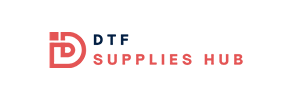Starting a California DTF Studio marks an exciting entry into one of the nation’s most dynamic markets, blending hands-on creativity with practical planning. This guide covers DTF printing California trends, the essentials of a DTF studio startup, and a clear path from concept to a thriving business. By outlining demand, workflow, permits, and cost controls, you’ll build a scalable California DTF business with repeat clients. Choose the right DTF equipment California for your budget, then design a production line that keeps turnaround tight and quality high. From market research to marketing strategies, you’ll learn how to open a DTF studio efficiently and legally while delivering consistent results.
Viewed through an LSI lens, this venture is a fabric-transfer print studio that serves small designers and local brands in California. Think of it as a turnkey operation that blends digital textile printing, heat-press finishing, and client collaboration to deliver high-quality, durable garments. By focusing on service, consistency, and local partnerships, you build a recognizable brand in the region without sacrificing flexibility. This approach aligns with search-friendly topics like digital-to-fabric transfers, heat-press workflows, and local production services that appeal to California clients.
Frequently Asked Questions
Starting a California DTF Studio: what are the essential first steps?
Define your niche (local brands, schools, events) and your service model. Choose a legal structure and obtain a California seller’s permit so you can buy materials and collect sales tax. Secure a suitable workspace and start sourcing essential DTF printing equipment. Develop a repeatable production workflow and a basic marketing plan to target DTF printing California clients.
How to open a DTF studio in California?
Begin with a clear plan: decide your legal structure (sole prop, LLC, or corporation), register as needed, and obtain a seller’s permit. Check local zoning, business licenses, and any environmental rules in your city or county. Then select a space and purchase the core DTF equipment California you need to begin production, keeping in mind permitting and compliance from the start.
What DTF equipment California do I need for a successful DTF studio startup?
A practical starter setup includes a DTF printer with white and color inks, a heat press or conveyor press, transfer film and adhesive powders, curing equipment, and basic cleaning supplies. Add RIP software for color management and a selection of textiles for proofing. Balance upfront costs with daily throughput to support your DTF studio startup in California.
How can I market and price my California DTF business effectively?
Develop a pricing framework based on costs, margins, and market expectations—often with tiered pricing by order size and rush fees. Build a professional website and portfolio, reach out to local schools, clubs, boutiques, and print shops, and pursue partnerships. Use SEO and content that targets DTF printing California and your city to attract nearby clients and strengthen your California DTF business.
What safety, compliance, and sustainability practices should I adopt when Starting a California DTF Studio?
Establish ventilation, PPE, and spill response procedures for inks, powders, and solvents. Stay compliant with California environmental and waste-disposal rules, obtain required permits, and maintain proper documentation. Adopt sustainable practices—recycling film cores, minimizing waste, and choosing refillable consumables—to differentiate your Starting a California DTF Studio and appeal to eco-conscious clients.
| Topic | Key Point Summary |
|---|---|
| Niche & Business Model | Define a precise niche (e.g., small-batch local brands, schools, boutique labels) and decide on a model (short runs vs mid-volume, design services, lead times, pricing) to differentiate in California. |
| Legal Structure & Compliance | Choose a legal structure, obtain seller’s permit/resellers license, check local zoning and licenses, and review environmental rules; consider consulting a local attorney for California specifics. |
| Equipment & Supplies | Invest in a DTF printer with white ink and color inks, heat press, transfer films, powders, curing gear, RIP software; balance upfront cost with daily throughput and maintenance; ensure color fidelity. |
| Location & Studio Design | Create a clean, well-lit workflow space with sufficient electrical capacity, ventilation, and humidity control; separate production from customer-facing areas; start small in a flexible space and scale up. |
| Production Workflow | Establish a reproducible workflow: pre-press review, printing, powdering, curing, finishing, QA, packaging; maintain color profiles and check for issues at each step. |
| Financial Planning & Pricing | Create a realistic budget covering equipment, consumables, rent, utilities, marketing, and labor; price with tiered options, rush fees, and clear quotes; plan for cash flow. |
| Marketing & Sales Channels | Build a professional site, leverage local partnerships (schools, clubs, boutiques), maintain social presence, and optimize for SEO with terms like DTF printing California; use an email CRM. |
| Compliance, Safety & Sustainability | Set safety protocols, ventilation, PPE, waste disposal; comply with California environmental rules; adopt sustainable practices to attract eco-conscious clients. |
| Hiring & Operations as You Scale | Plan for growth: hire production tech, customer service, and marketing; emphasize reliability, attention to detail, and a customer-centric service; train on both technical and professional standards. |
| First 90 Days Checklist | Finalize legal structure, set up workspace, secure vendors, launch a basic website/portfolio, reach out to potential clients, define pricing and contracts, establish a simple CRM. |
| What You’ll Gain | Clear plan, practical equipment/setup tips, financial planning and California-tailored pricing ideas, marketing fundamentals for local visibility, and compliance/sustainability best practices. |
Summary
Starting a California DTF Studio is an ambitious yet achievable venture that blends creative design with practical operations in one of the country’s most dynamic markets. By focusing on a clear niche, navigating California’s regulatory landscape, investing in reliable DTF printing equipment, and delivering consistent, high-quality results, you’ll establish a trusted studio that attracts repeat clients. The plan emphasizes niche definition, compliance, efficient workflow, and targeted local marketing to build a sustainable, scalable business that thrives in California’s competitive DTF space.

